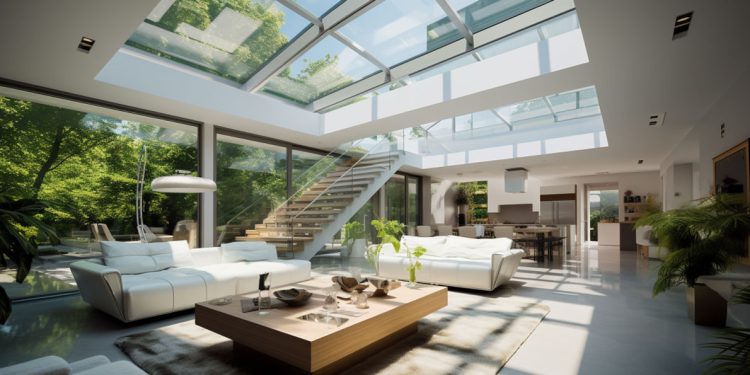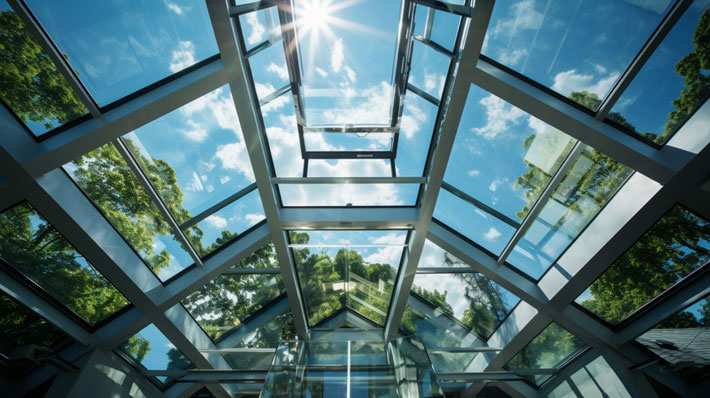Unlocking the Potential of Glass Roofs: 10 Essential Factors to Consider for Your Architectural Design

Glass ceilings are increasingly becoming a staple in contemporary architectural designs, delivering both practical benefits and visual appeal. Whether for homes or commercial structures, these transparent roofs are highly desirable for their ability to offer illumination, spaciousness, and a feeling of being in tune with the external environment. If you’re thinking of integrating a glass ceiling into your architectural plans, here are 10 crucial aspects you should consider.
Natural Light Galore
One of the standout advantages of glass roofs is the profusion of natural light they invite into indoor spaces. The see-through quality of the glass enables sunlight to permeate the area, making it feel brighter and more inviting while also cutting down on daytime electricity costs.
Energy-Saving Features
Contrary to popular belief, glass ceilings can actually be energy-efficient if designed and constructed properly. Cutting-edge glazing technologies, such as low-E coatings and double or triple-glazed units, work to reduce thermal exchange, helping to stabilize indoor temperatures throughout the year.
Temperature Management
To counter excessive heat or cold transfer, glass ceilings can be fitted with shade-providing elements like blinds or specialized solar coatings. These features work to control the internal temperature, optimizing comfort while reducing energy usage.
Airflow Solutions
Adequate airflow is vital for sustaining a healthy indoor atmosphere. Glass ceilings can include a range of ventilation mechanisms, from movable windows and vents to automated systems, to facilitate the flow of fresh air and enhance indoor air quality.
Built to Last
The types of glass used in ceilings are constructed to resist various environmental factors, thereby offering extended durability. Common choices include tempered or laminated glass, which can hold up against impacts, wind, and temperature fluctuations while maintaining structural stability.
Sound Insulation
You can design your glass ceiling to act as a barrier against external noise. Soundproofing options like special acoustic glass or laminates can reduce noise transmission from outside, making the indoor space more serene.
Upkeep Requirements
Ongoing maintenance is crucial for the longevity of glass ceilings. Although glass surfaces are generally straightforward to clean, getting to them might necessitate professional help. Consider ease of access and upkeep commitments when planning your glass ceiling.
Safety Protocols
Safety is paramount when it comes to glass ceilings. These structures are developed with particular safety guidelines, using materials like laminated or tempered glass and incorporating safety rails to avoid mishaps and comply with regulations.
Creative Versatility
The adaptability of glass ceilings allows architects and designers to conceive architecturally striking spaces. The transparent and flexible nature of the material complements various design aesthetics and opens up countless avenues for inventive design.
Expert Implementation
Correct installation is fundamental to the longevity and efficiency of a glass ceiling. Employing skilled professionals who specialize in glass ceiling systems will ensure accurate installation, thorough weatherproofing, and compliance with safety norms.
To sum up, glass ceilings offer a multitude of benefits—ranging from ample natural lighting and energy conservation to temperature regulation and ventilation. While durable and versatile, these structures do necessitate routine care and skilled installation to guarantee safety and optimal functionality. Keeping these key factors in mind can aid in making a well-informed choice when opting for a glass ceiling, thus elevating both the visual and practical elements of your space.










